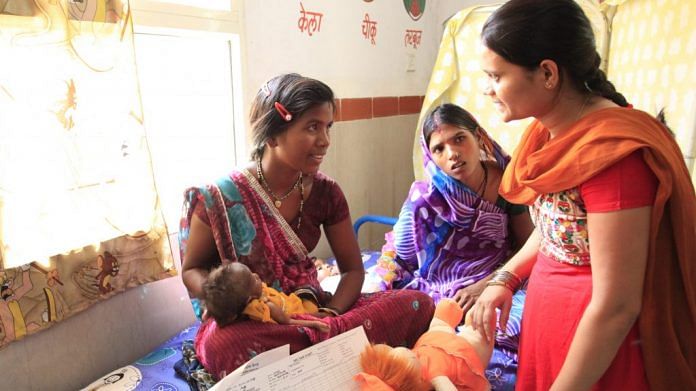Sitting in a bathtub with rose petals sprinkled around, pop star Madonna told her fans that the coronavirus is a “great equaliser”. But she couldn’t be further from the truth.
While the Covid crisis has forced harsh challenges across the world, some parts of the population have suffered more than others. A recent study conducted by the United Nations Population Fund (UNFPA) in April 2020 revealed that if the lockdown continues for another six months, 47 million women in low and middle-income countries run the risk of not being able to access modern contraceptives, which could result in seven million unintended pregnancies. Moreover, 31 million cases of gender-based violence can be expected in the coming months.
The United Nations marks World Population Day every year on 11 July, with the aim of spreading awareness on overpopulation, underpopulation, family planning and birth control. This day was first observed in 1989, after the United Nations Development Program found that the global population had already crossed the five billion mark.
The UNDP anticipated that overpopulation would become a matter of major concern in the future and with the world’s population currently touching 7.8 billion and expected to reach 8.5 billion by 2030, concerns regarding overpopulation aren’t unfounded.
In light of the alarming data about women in the pandemic, the United Nations decided that this year, World Population Day will platform awareness of the sexual and reproductive needs and rights of women, particularly during the Covid-19 crisis.
These rights are inextricably linked to education, awareness, physical safety and financial independence for women, all of which have been severely impacted in India. This World Population Day, ThePrint takes a look at how the coronavirus-induced lockdown has increased gender disparity in India.
Also read: World Day Against Child Labour: Covid and reverse migration could push more children to work
Gender and caste angle to lockdown-induced job losses
A paper written by Ashwini Deshpande, professor of economics at Ashoka University, revealed gender and caste disparities in early lockdown-induced job losses. While women had suffered relatively more than men, rural women had suffered more than urban women and Dalits more than upper castes. Women who were employed pre-lockdown are 23.5 percentage points less likely to be employed post-lockdown than men.
Bina Agarwal, Professor of Development Economics and Environment at the University of Manchester tells ThePrint, “We can’t generalise for all women. Gender gaps on many counts depend on class and rural/urban location. The lockdown effects were especially adverse for women of poor households, in terms of job and income loss, and intra-household distribution of food and carework.”
“The other big gender gap has been among healthcare workers. In India, more than 80 per cent of nurses, midwives and ASHA workers are female while more than 80 per cent of doctors are male. There have been many reports of doctors being prioritised over nurses in the distribution of PPEs,” she explains.
Agarwal points to the gendered impact on access to informal or formal jobs, the rise in domestic violence during the lockdown, access to the internet, which will impact girls’ education — if there is only one computer in a family, the chances are that the boy child will be given priority for his online classes, rather than the girl.
Dr Ranjana Kumari, Director, Centre for Social Research, says, “The lockdown has amplified the gender gap in many ways. Even if you look at electoral representation, women have been completely ignored in the Rajasthan Rajya Sabha elections.” She adds that there has been a sharp increase in cases of child marriage, and rues that “The pandemic has undone a lot of progress that we made on the gender equality debate.”
Also read: Covid pushed women back decades. India can’t be ‘atmanirbhar’ without bailing them out
Policy overhaul and political will on women’s rights needed
On ways in which this gender parity can be addressed, Dr Ranjana Kumari says, “We need very clear politics on how to address issues of violence and health. We can’t possibly have a gender blind lens. There needs to be a perspective in policy making. However, the budget is missing and the political will is missing as well.”
While Agarwal believes that there needs to be stringent discussions on post-lockdown scenarios, she also says “directing relief measures towards women is always a good idea for helping the entire family. This was done with the Pradhan Mantri Jan Dhan Yojana, although the amount was small and implementation was weak.”
She was also hopeful given the “extraordinary role” played by self-help groups in running community kitchens or making protective equipment, and by ASHA workers helping through the testing process. Agarwal said, “I hope this will lead to more women-inclusive economic policies which also provide gender wage parity.”
Also read: Fewer working hours, higher stress, drop in income: UN survey shows how Covid affected women






